


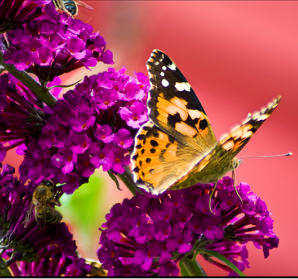










Scientific Name
Tanacetum coccineum
Common Name
Painted Daisy/ Pyrethrum
Sun Exposure
Full Sun or Partial Shade
Soil Type
Normal, Sandy or Clay
Blooming Time
Late Spring to Early Summer
Height
75-90 cm 15-24 inches
Spread
45-60 cm 18-23 inches
Deer Resistant
Rabbit Resistant



Tanacetum (Pyrethrum)

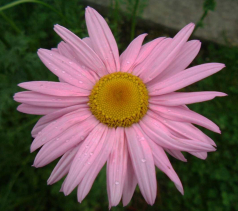
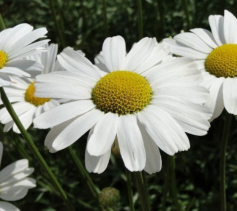
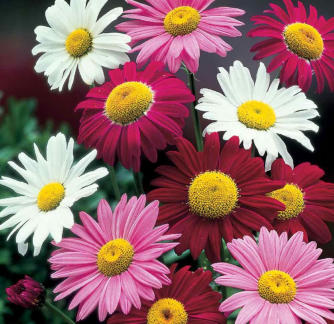
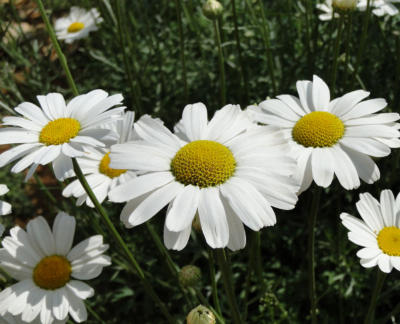
This mixture of large, vibrant daisies will range from white, to pink, to red. The stunning blooms are perfect for cutting and will provide a brilliant show in
late spring to summer
Attractive, fine textured foliage and a range of colors make growing painted daisies an asset to any garden. When planting painted daisy perennials,
plan the location where they can afford protection to more vulnerable plants. For instance, you can include this multi-tasking flower in the vegetable
garden, along with nasturtiums and marigolds, to diminish insect damage. Painted daisy growing tips include planting in a well-drained soil in a full sun
to part shade location. Start from seeds four to six weeks before your last frost date or by division of existing plants in early spring or fall. Allow room
for plants to spread from 18 to 24 inches. Painted daisy care includes pinching back in spring when stems are 6 to 8 inches tall, promoting bushiness
and a fuller plant. As summer blooms fade, cut the plant back for more blooms in autumn to help protect autumn garden crops.
One of nature's most valuable plants. The Painted Red Daisy can’t be beaten for cutting, with elegant, frond-type foliage that shows off the brilliant
blooms in June and July. Cuttings last three to four times longer than roses, for example. Pyrethrum extract is used to make organic insecticides with
almost instant knock-down. Since most insects can't tolerate flowering pyrethrum, it helps to keep your garden pest free. Doubly remarkable is that the
Painted Red Daisy only affects harmful insects, not other plant or animal life!
Alcea (Hollyhock)
Aquilegia
Buddliea
Buddliea Altternifolia
Delphinium
Dianthus (Carnations)
Echinacea
Eryngium
Geranium
Gerbera
Geum
Gypsophila
Herbs
Hosta
Iris
Kniphofia
Lantana
Leucanthemum
Lupins
Monarda
Penstemon
Peony
Phlox
Rudbeckia
Sidalcea
Sysirinchium
Tanacetum (Pyrethrum)
Thalictrum
Trollius
Verbena
Tanacetum Robinson's Red
Tanacetum Robinson's Pink
Tanacetum Balsamita